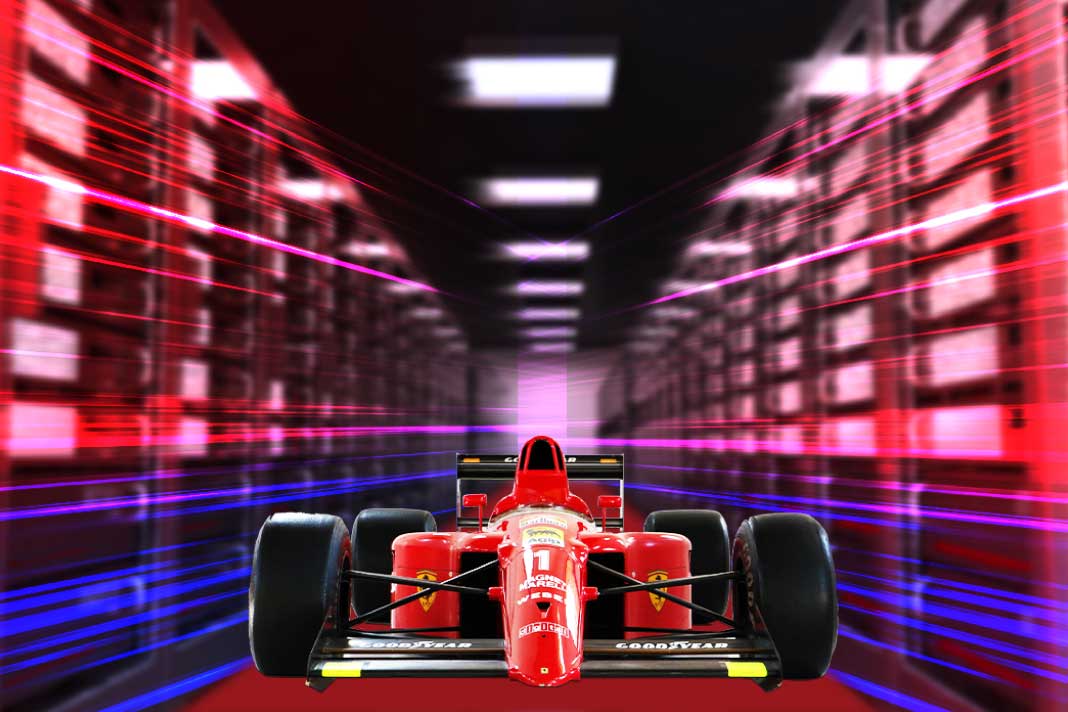Explore how real-time data, telemetry, and cloud tech power every F1 decision—from pit stops to podiums—in this deep dive into racing’s digital backbone.
Formula 1 operates at the confluence of speed, precision, and cutting-edge technology. Beyond the high-octane races, an invisible layer of complexity defines the sport’s success—its data infrastructure. Behind every split-second decision, every millimeter-perfect overtaking maneuver, and every perfectly-timed pit stop are millions of data points being captured, processed, and analyzed in real time.
This second installment in our series focuses on the intricate data collection systems, real-time processing, and infrastructure that power Formula 1. From advanced sensor networks to robust telemetry systems and cloud computing capabilities, this deep digital ecosystem enables teams to unlock performance, anticipate challenges, and optimize strategies before and during race weekends.
The Backbone of Real-Time Decisions: Data Collection in Formula 1
Modern Formula 1 cars are technological marvels, heavily reliant on their ability to sense, collect, and transmit data constantly. State-of-the-art hardware designed to capture a staggering array of metrics is embedded within every inch of these machines.
Sensor Networks on F1 Cars
Each Formula 1 car has an average of 250 to 300 sensors designed to monitor every conceivable performance aspect. These sensors are meticulously arranged to capture key variables, including speed, tire pressure, engine temperature, suspension articulation, and aerodynamic stress. Even more specific instrumentation, such as fuel flow meters and thermal imaging, ensures that no aspect of the vehicle’s operation goes unnoticed.
- Tire Technology: One of the most critical aspects of F1 performance lies in tire management. Each car has a Tire Pressure Monitoring System (TPMS) that continuously scans tire pressure and reports issues before they escalate. Furthermore, thermal sensors mounted near tires measure surface temperature, providing real-time insights into tire degradation and grip levels.
- Aerodynamic Insights: Engineers can accurately measure airflow and stagnation pressure thanks to devices like Pitot tubes and Kiel probes (adapted from the aerospace industry). The collected data is crucial for validating aerodynamic simulations and adjusting to achieve optimal downforce and minimize drag.
- Driver Biometric Data: Modern advances have extended data collection to athletes. Biometric gloves with micro-sensors monitor vital signs like heart rate and blood oxygen levels. This data helps optimize driver performance and ensures rapid response during an accident.
What makes this sensor network particularly impressive is its granularity. These devices deliver a stream of continuous data, often sampled thousands of times per second. This microscopic level of detail ensures that no aspect of the car’s behavior is random or left to chance.
Immense Data Volumes per Weekend
The data generated by a single car during a race weekend is jaw-dropping. On average, over 1 terabyte of raw data is collected per car. When processed and combined with video and telemetry inputs, this can easily expand to over 2 terabytes.
To put this in perspective, Mercedes-AMG Petronas collected over 11 terabytes of data during the 2022 Mexican Grand Prix alone. This includes everything from in-race telemetry to practice session simulations, all transmitted to and from the team’s centralized factory systems for further analysis.
The relentless pursuit of actionable insights necessitates systems that capture, transmit, and process data at lightning speed. Telemetry and cloud computing help with this.
Telemetry Systems: Formula 1’s Central Nervous System
Telemetry—the live transmission of data from the car to the pit wall and beyond—is arguably the most critical element of Formula 1’s data ecosystem. It acts as the sport’s central nervous system, enabling engineers and strategists to make real-time decisions with unparalleled precision.
How Telemetry Works
Telemetry systems were introduced to Formula 1 decades ago. Today, the technology is so advanced that sensors aboard the car continuously transmit data to engineers, who can monitor the vehicles remotely at the track and even hundreds or thousands of miles away.
- Live Data Transmission: The telemetry system transmits live data over high-speed, low-latency digital networks to ensure engineers are always synced with the car’s performance. European races boast transmission speeds with latencies as low as 10–15 milliseconds, enabling near-instantaneous analysis. However, for geographically distant venues like Australia or Japan, latency can increase to around 300 milliseconds—a challenge the sport continues to address with advanced networking infrastructure.
- Real-Time Adjustments: Due to strict regulations, teams cannot remotely reconfigure the car during races. However, by analyzing telemetry data, engineers can guide drivers to manually configure modes for fuel efficiency, brake system cooling, or energy harvesting. This guidance requires collaborative precision.
ATLAS and Real-Time Software Tools
Formula 1 teams use standardized telemetry platforms like ATLAS (developed by McLaren Applied) and proprietary tools integrating big data and analytics capabilities.
An example is the RaceWatch platform, which is widely used to provide real-time visualizations of lap times, video feeds, and detailed system readouts. Adopting such tools ensures that Formula 1 teams can analyze incoming data effectively during races and within factory simulators.
This real-time connection bridges the track’s dynamic environment with the team headquarters’ controlled analytical capacity.
The Power of Cloud Computing in Formula 1
With Formula 1 generating terabytes of data, on-site infrastructure is only part of the equation. The real processing power lies in cloud computing, where intricate simulations and data models come to life.
AWS and Oracle Driving Innovation
Cloud partnerships have revolutionized the way Formula 1 processes data. Amazon Web Services (AWS) and Oracle Cloud Infrastructure (OCI) are prominent solutions enabling teams to run high-frequency simulations and manage colossal datasets efficiently.
- Faster CFD Simulations: CFD (Computational Fluid Dynamics) simulations—used for aerodynamic testing—once took 60 hours to complete. By migrating these workloads to AWS’s high-performance computing instances, teams complete simulations in as little as 12 hours, accelerating car design iterations.
- Extensive Race Scenario Modeling: Oracle’s cloud is key to Red Bull Racing’s dominance in recent years. OCI processes billions of race simulations across different scenarios, allowing engineers to predict optimal strategies for every race condition.
Storing and Leveraging Historical Data
Formula 1’s archive is also stored in cloud environments. AWS hosts 70 years of historical race data, an invaluable resource for predictive modeling. Integrating this archive with modern machine learning algorithms helps predict everything from lap performances to optimal tire strategies based on statistical likelihood.
Beyond performance-oriented applications, cloud solutions also bolster fan engagement. Data democratization has allowed platforms like F1 Insights to make telemetry and strategy analysis accessible to casual viewers—a testament to the scalability of cloud-powered infrastructure.
Challenges of Real-Time Processing
Processing such immense volumes of data in real-time comes with unique challenges:
- Latency Management: Teams must process millions of data points per second while maintaining accuracy. Even slight delays could lead to missed opportunities.
- Maintaining Data Integrity: From misaligned inputs to missing segments, ensuring the data is clean and synchronized is an ongoing task. Corrupted or incomplete data can skew analyses and lead to costly errors in race strategy.
- Scalability: Formula 1’s data infrastructure must scale to meet the spikes in demand during race weekends, often requiring cloud-based solutions and distributed processing to efficiently handle the flood of information.
- Cost: Building and maintaining high-performance data systems comes with significant financial investment, especially for smaller teams. Cloud services offer scalability but can quickly become expensive at the scale and speed Formula 1 demands.
Teams are turning to advanced data architectures such as stream processing frameworks and fault-tolerant messaging systems like Apache Kafka to address these challenges. Automated error-checking and cleansing functions help preserve data integrity, while scalable cloud platforms ensure teams can adjust their capacity on demand without being hamstrung by infrastructure limits. By continuously innovating on software and hardware fronts, Formula 1 remains at the edge of what’s possible with real-time data, transforming technical hurdles into opportunities for competitive advantage.



